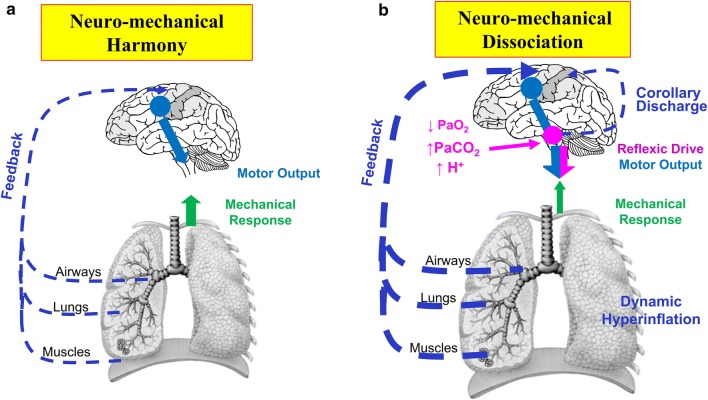Fig. 1.
a Neuromechanical harmony and b dissociation in a patient with COPD during exertion. a Synchronous activation of the respiratory and locomotor muscles with progressive motor command output increases to maintain ventilation with activity initiation. b Arterial oxygen desaturation, increased [H+], and increased VCO2 with corresponding chemostimulation of medullary centers and increased IND as exercise continues. Resting and dynamic hyperinflation and resulting mechanical constraints lead to neuromechanical dissociation and distressing unsatisfied inspiration during exertion. COPD chronic obstructive pulmonary disease, [H+] hydrogen ion concentration, IND inspiratory neural drive, PaCO2 arterial partial pressure of carbon dioxide, PaO2 arterial partial pressure of oxygen, VCO2 carbon dioxide production.
Reprinted from Clin Chest Med, 40(2): Denis E. O’Donnell, Matthew D. James, Kathryn M. Milne, J. Alberto Neder, The pathophysiology of dyspnea and exercise intolerance in chronic obstructive pulmonary disease, 343–366, Copyright (2019), with permission from Elsevier

